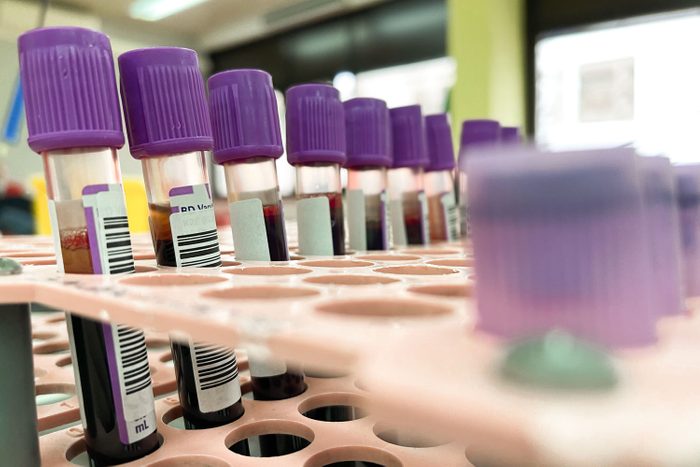Here’s Who Needs To Be Tested for an Overwhelmingly Life-Threatening Cancer, Say New Guidelines
Updated: Nov. 06, 2023

Experts even developed a simple calculator tool to help you determine whether the new recommendation applies to you.
Maybe it’s been decades since you’ve smoked, or you were never a smoker at all. While 2019 data suggested women fear breast cancer the most and men are most concerned about prostate cancer, the American Cancer Society states that lung cancer is “the second most common cancer for both men and women.” The society adds that lung cancer accounts for approximately one in five of all cancer deaths, and that “each year, more people die of lung cancer than of colon, breast, and prostate cancers combined.”
Sadly, lung cancer has one of the lowest five-year survival rates because it is often detected in advanced stages, limiting treatment options.
So why aren’t Americans as worried about lung cancer? One possible reason is that lung cancer isn’t always caused by smoking—for example, people who live in high-pollution or high-radon areas from coal mining might not be aware they’re at greater risk.
Also, as more individuals quit smoking, some tend to downplay the impact their earlier years of heavy smoking might have on their current health.
Lung Cancer Is Worst in These 8 States, New National Report Says
The American Lung Association has reported that in 2021, only 5.8% of those eligible for screening took advantage of an early detection tool. The American Cancer Society is taking steps to address this issue and has recently updated its guidelines for life-saving cancer screening to include more former heavy smokers.
Previously, the guidelines, which were expanded in 2021, recommended that individuals between 50 and 80 years old who had smoked for more than “20 pack years” in the previous 15 years undergo annual lung cancer screening. The new guidelines now target anyone who has accumulated “20 pack years” over their lifetime, regardless of when that heavy smoking period occurred.
A “pack year” is equivalent to smoking one pack of cigarettes per day for a year. For instance, someone who smoked one pack a day for 20 years would qualify.
Likewise, an individual who smoked two packs a day for 10 years would meet the criteria.
Don’t Smoke? Here’s Why You Still Need to Be Screened for Lung Cancer
The key message here is that early detection can save lives. In a 2022 report from the American Lung Association, Harold Wimmer, MS, the national president and CEO of the organization, emphasized that the five-year survival rate for lung cancer had increased to 25% over the years. However, lung cancer screening is underutilized: The five-year survival rate for early-stage lung cancer could be as high as 61%.
Wimmer stated: “Increased lung cancer survival is attributable to advancements in research, better treatments and other factors, however, lung cancer screening is the most immediate opportunity we have to save lives. If you are eligible for lung cancer screening, we encourage you to speak with your doctor about it. If a loved one is eligible, please encourage them to get screened.”
Early detection is critical with lung cancer because symptoms often appear in advanced stages. Dr. David Yankelevitz, a professor of radiology and the director of the lung biopsy service at the Icahn School of Medicine, told NBC News that the low rates of screening are a “national tragedy” and emphasized that screening is “our greatest weapon against cancer by far.”
If you were a former smoker, discuss these new guidelines with your healthcare provider to see if you qualify for screening and would benefit from it, and pass the message along to any former smokers in your life. You can assess your lung cancer risk using a pack-year calculator or consult your healthcare professional if you have concerns about your smoking history.
- Doing This Simple Exercise Daily Could Reduce Heart Disease Risk by 20%
- These Are the 3 Vaccines You Need to Know About This Fall, Say Expert Doctors
- Live in This Northeastern State? There’s a Fierce Chance You’re Clinically Burnt-Out
- Does Smoking Weed Cause Lung Cancer? A Lung Cancer Doctor Shares ‘the Short Answer’















